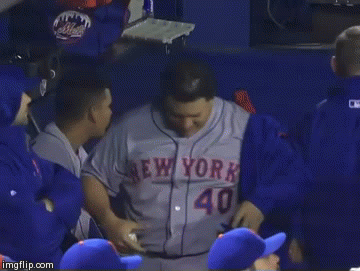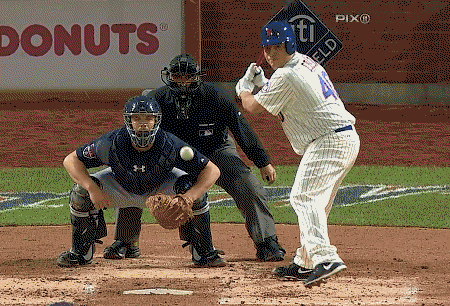This article was originally published at Mid Level Exceptional on August 23, 2014.
Last month, in “The Value of a House on NBA Island”, I estimated the NBA franchise valuations for each of the 30 teams. Steve Ballmer’s $2 billion purchase of the Los Angeles Clippers demonstrated that the oft-cited Forbes valuations badly undershoot the market price of a basketball team. (Forbes had priced the Clippers at $575 million.)
My approach is based on a range of revenue multipliers which are partially determined by the team’s market size. In finance, revenue multipliers capture the potential for future earnings growth; Netflix trades at a high multiple, while Delta Air Lines’ is low. The methodology is simple, clear and grounded in the team’s ability to produce revenue. The problem is that my multipliers are mostly guesswork and the ranges are wide for the big-market teams. You do not need to read 1,000 words to know that the Knicks are probably worth between $2 and $4 billion.
Since then, the Clippers’ financials were entered as an exhibit in last month’s trial upholding Ballmer’s purchase of the team. Bank of America, which advised the Sterling trust on the sale, created the report for potential buyers. This “bid book” provides an opportunity to reground my model’s assumptions.
The report estimates that the Clippers earned $165 million in revenue this season and breaks it out into ticket sales, its local cable contract, revenue sharing and other sources. Additionally, the Clippers’ value is also predicated on new expected revenue sources: new local cable and national TV contracts, both of which would begin in the 2016-17 season. The latter is hotly anticipated, with both LeBron James and Lance Stephenson structuring their contracts to hit free agency the summer after the deal is signed and the salary cap (presumably) spikes.
In the most aggressive projections, the local cable contract would add $100 million per year to the team’s revenue and the national TV deal would add $60 million per year. This implies that the national TV deal will be worth $2.7 billion per year since the teams get an equal share of national TV revenue. Currently, the NBA generates $930 million per year from that source.
The present value of $160 million of revenue in the 2016-17 season is $129 million (I used a discount rate of 7.5% per year over three seasons to approximate B of A’s methodology.) So if current plus future revenue is worth $294 million, then Ballmer paid 6.8 times earnings for the Clippers. On a historical basis, this is high, but not nearly as lofty as the 15 times earnings that was initially reported (itself based on $128 million in revenue, last year’s number.)
With that said, these are very optimistic estimates and I suspect that Ballmer realizes that the Clippers are unlikely to double their revenue overnight from new TV deals. According to the New York Times, the Clippers’ new local cable contract could be worth $60 million per year, adding $35 million in revenue annually. Marc Ganis, president of Sports Corp Limited, thinks that the national TV deal will be worth between $1.75 and $2.1 billion per year. If we use $2 billion, the Clippers’ share increases by $35 million, to $65 million.
If the Clippers gain $70 million from new local and national TV contracts, the present value of that money would be about $56 million. Total current plus future revenue would be worth $221 million, meaning that the Clippers are worth 9 times earnings.
Using these improved estimates of future revenue growth, the valuations model can be fine-tuned, with narrower ranges of revenue multipliers. Previously, the multipliers had been skewed by the incorrect conclusion that the Clippers were worth 15 times earnings. As before, higher multipliers are used for teams in bigger markets since they benefit from greater national media exposure, ability to attract top free agents and prestige.
Even though we lack detailed revenue breakdowns for each team, this exercise can be extended to the whole league using similar assumptions:
Last month, in “The Value of a House on NBA Island”, I estimated the NBA franchise valuations for each of the 30 teams. Steve Ballmer’s $2 billion purchase of the Los Angeles Clippers demonstrated that the oft-cited Forbes valuations badly undershoot the market price of a basketball team. (Forbes had priced the Clippers at $575 million.)
My approach is based on a range of revenue multipliers which are partially determined by the team’s market size. In finance, revenue multipliers capture the potential for future earnings growth; Netflix trades at a high multiple, while Delta Air Lines’ is low. The methodology is simple, clear and grounded in the team’s ability to produce revenue. The problem is that my multipliers are mostly guesswork and the ranges are wide for the big-market teams. You do not need to read 1,000 words to know that the Knicks are probably worth between $2 and $4 billion.
Since then, the Clippers’ financials were entered as an exhibit in last month’s trial upholding Ballmer’s purchase of the team. Bank of America, which advised the Sterling trust on the sale, created the report for potential buyers. This “bid book” provides an opportunity to reground my model’s assumptions.
The report estimates that the Clippers earned $165 million in revenue this season and breaks it out into ticket sales, its local cable contract, revenue sharing and other sources. Additionally, the Clippers’ value is also predicated on new expected revenue sources: new local cable and national TV contracts, both of which would begin in the 2016-17 season. The latter is hotly anticipated, with both LeBron James and Lance Stephenson structuring their contracts to hit free agency the summer after the deal is signed and the salary cap (presumably) spikes.
In the most aggressive projections, the local cable contract would add $100 million per year to the team’s revenue and the national TV deal would add $60 million per year. This implies that the national TV deal will be worth $2.7 billion per year since the teams get an equal share of national TV revenue. Currently, the NBA generates $930 million per year from that source.
The present value of $160 million of revenue in the 2016-17 season is $129 million (I used a discount rate of 7.5% per year over three seasons to approximate B of A’s methodology.) So if current plus future revenue is worth $294 million, then Ballmer paid 6.8 times earnings for the Clippers. On a historical basis, this is high, but not nearly as lofty as the 15 times earnings that was initially reported (itself based on $128 million in revenue, last year’s number.)
With that said, these are very optimistic estimates and I suspect that Ballmer realizes that the Clippers are unlikely to double their revenue overnight from new TV deals. According to the New York Times, the Clippers’ new local cable contract could be worth $60 million per year, adding $35 million in revenue annually. Marc Ganis, president of Sports Corp Limited, thinks that the national TV deal will be worth between $1.75 and $2.1 billion per year. If we use $2 billion, the Clippers’ share increases by $35 million, to $65 million.
If the Clippers gain $70 million from new local and national TV contracts, the present value of that money would be about $56 million. Total current plus future revenue would be worth $221 million, meaning that the Clippers are worth 9 times earnings.
Using these improved estimates of future revenue growth, the valuations model can be fine-tuned, with narrower ranges of revenue multipliers. Previously, the multipliers had been skewed by the incorrect conclusion that the Clippers were worth 15 times earnings. As before, higher multipliers are used for teams in bigger markets since they benefit from greater national media exposure, ability to attract top free agents and prestige.
Even though we lack detailed revenue breakdowns for each team, this exercise can be extended to the whole league using similar assumptions:
- Start with 2012-13 revenue, assume flat growth for simplicity
- New national TV deal gives team $35 million in revenue in 2016-17 season
- 2016-17 expected revenue is discounted at 7.5%/year over three seasons






